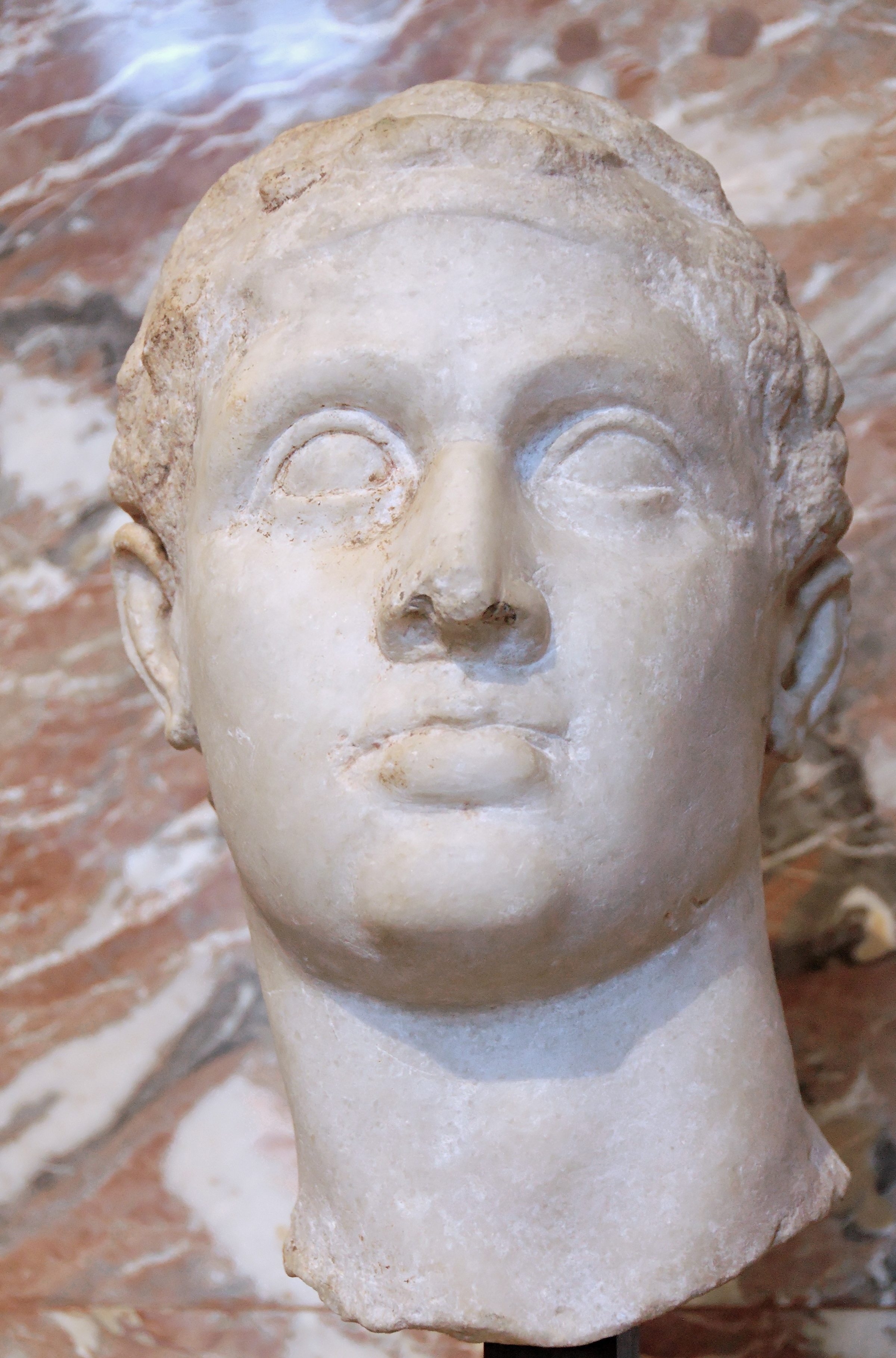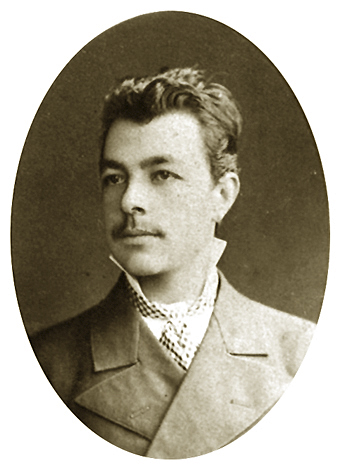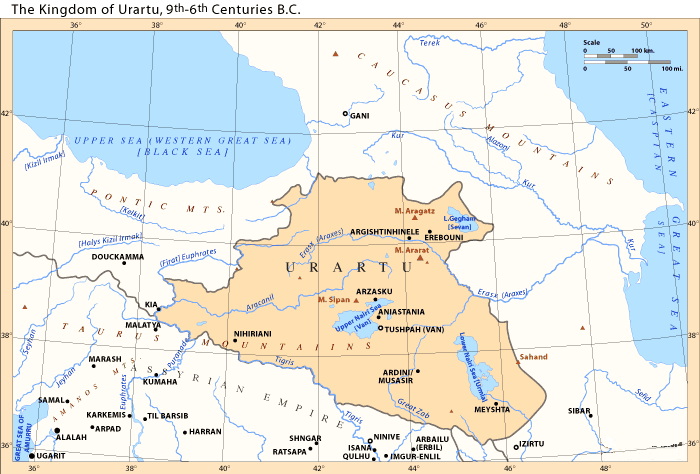|
Armavir (village)
Armavir ( hy, Արմավիր) is a village in the Armavir Province of Armenia near the Armenia–Turkey border. Cuneiform inscriptions of Urartian King Sarduri II were found at Armavir. The village was founded in 1613, 1 km east of the site of ancient Armavir. After the Ottoman occupation, Armavir was renamed Ghurdughuli by the Turks in 1635. After the Soviet occupation of Armenia, the name of the village was renamed back Armavir in 1935. History Antiquity The area of ancient Armavir was inhabited since the 6th millennium BC. Various obsidian instruments, bronze objects and pottery have been found from that period. Armavir was regarded as an ancient capital of Armenia, said to have been founded by King Aramais in 1980 BC. During the first half of the 8th century BC, King Argishti I of Urartu built a fortress in the area and named it Argishtikhinili. In 331 BC, when Armenia under the Orontid Dynasty asserted its independence from the Achaemenid Empire, Armavir was chosen ... [...More Info...] [...Related Items...] OR: [Wikipedia] [Google] [Baidu] |
Armenia
Armenia (), , group=pron officially the Republic of Armenia,, is a landlocked country in the Armenian Highlands of Western Asia.The UNbr>classification of world regions places Armenia in Western Asia; the CIA World Factbook , , and ''Oxford Reference Online'' also place Armenia in Asia. It is a part of the Caucasus region; and is bordered by Turkey to the west, Georgia to the north, the Lachin corridor (under a Russian peacekeeping force) and Azerbaijan to the east, and Iran and the Azerbaijani exclave of Nakhchivan to the south. Yerevan is the capital, largest city and the financial center. Armenia is a unitary, multi-party, democratic nation-state with an ancient cultural heritage. The first Armenian state of Urartu was established in 860 BC, and by the 6th century BC it was replaced by the Satrapy of Armenia. The Kingdom of Armenia reached its height under Tigranes the Great in the 1st century BC and in the year 301 became the first state in the worl ... [...More Info...] [...Related Items...] OR: [Wikipedia] [Google] [Baidu] |
Hesiod
Hesiod (; grc-gre, Ἡσίοδος ''Hēsíodos'') was an ancient Greek poet generally thought to have been active between 750 and 650 BC, around the same time as Homer. He is generally regarded by western authors as 'the first written poet in the Western tradition to regard himself as an individual persona with an active role to play in his subject.' Ancient authors credited Hesiod and Homer with establishing Greek religious customs. Modern scholars refer to him as a major source on Greek mythology, farming techniques, early economic thought, archaic Greek astronomy and ancient time-keeping. Life The dating of Hesiod's life is a contested issue in scholarly circles (''see § Dating below''). Epic narrative allowed poets like Homer no opportunity for personal revelations. However, Hesiod's extant work comprises several didactic poems in which he went out of his way to let his audience in on a few details of his life. There are three explicit references in '' Works and Days ... [...More Info...] [...Related Items...] OR: [Wikipedia] [Google] [Baidu] |
Cleopatra VII
Cleopatra VII Philopator ( grc-gre, Κλεοπάτρα Φιλοπάτωρ}, "Cleopatra the father-beloved"; 69 BC10 August 30 BC) was Queen of the Ptolemaic Kingdom of Ancient Egypt, Egypt from 51 to 30 BC, and its last active ruler.She was also a diplomat, Ancient navies and vessels, naval commander, linguist, and Ancient Greek medicine, medical author; see and . A member of the Ptolemaic dynasty, she was a descendant of its founder Ptolemy I Soter, a Ancient Macedonians, Macedonian Greek general and Government of Macedonia (ancient kingdom)#Companions, friends, councils, and assemblies, companion of Alexander the Great. writes about Ptolemy I Soter: "The Ptolemaic dynasty, of which Cleopatra was the last representative, was founded at the end of the fourth century BC. The Ptolemies were not of Egyptian extraction, but stemmed from Ptolemy Soter, a Macedonian Greek in the entourage of Alexander the Great."For additional sources that describe the Ptolemaic dynasty as ... [...More Info...] [...Related Items...] OR: [Wikipedia] [Google] [Baidu] |
Tigranes II
Tigranes II, more commonly known as Tigranes the Great ( hy, Տիգրան Մեծ, ''Tigran Mets''; grc, Τιγράνης ὁ Μέγας ''Tigránes ho Mégas''; la, Tigranes Magnus) (140 – 55 BC) was King of Armenia under whom the country became, for a short time, the strongest state to Rome's east. He was a member of the Artaxiad Royal House. Under his reign, the Armenian kingdom expanded beyond its traditional boundaries, allowing Tigranes to claim the title Great King, and involving Armenia in many battles against opponents such as the Parthian and Seleucid empires, and the Roman Republic. Early years In approximately 120 BC, the Parthian king Mithridates II () invaded Armenia and made its king Artavasdes I acknowledge Parthian suzerainty. Artavasdes I was forced to give the Parthians Tigranes, who was either his son or nephew, as a hostage. Tigranes lived in the Parthian court at Ctesiphon, where he was schooled in Parthian culture. Tigranes remained a hos ... [...More Info...] [...Related Items...] OR: [Wikipedia] [Google] [Baidu] |
Gagik Sargsyan
Gagik Sargsyan ( hy, Գագիկ Խորենի Սարգսյան; 6 April 1926, in Yerevan – 25 August 1998, in Yerevan) was an Armenian historian, who served as the vice president of the Armenian Academy of Sciences. Biography He studied at Yerevan State University, then finished Leningrad State University in 1950. From 1954 to 1962 Sarkisyan worked at Institute of History of the Armenian Academy of Sciences, Deputy Director of the Institute of History of the Armenian Academy of Sciences (1962-1966). Director of the Institute of Oriental Studies of the Armenian Academy of Sciences, Professor of Yerevan State University. Academic-secretary of Humanitarian branch of the Armenian Academy of Sciences. He is known for his works dedicated to Armenian and Oriental history, including the academic work dedicated to Armenian historian Movses Khorenatsi Movses Khorenatsi (ca. 410–490s AD; hy, Մովսէս Խորենացի, , also written as ''Movses Xorenac‘i'' and Moses of K ... [...More Info...] [...Related Items...] OR: [Wikipedia] [Google] [Baidu] |
Stepan Malkhasyants
Stepanos Sargsi Malkhasiants ( hy, Ստեփան Սարգսի Մալխասյանց; – July 21, 1947) was an Armenian academician, philologist, linguist, and lexicographer. An expert in classical Armenian literature, Malkhasiants wrote the critical editions and translated the works of many classical Armenian historians into modern Armenian and contributed seventy years of his life to the advancement of the study of the Armenian language. Early life and education Malkhasiants was born in Akhaltsikh, in what was then Russian Georgia, in 1857. He received his primary education at the Karapetian Parochial school in Akhaltsikh. From 1874 to 1878, he attended the Gevorgian Seminary in Vagharshapat (current-day Echmiadzin). Malkhasiants was admitted to the department of Oriental studies at Saint Petersburg State University. He graduated in 1889 with an emphasis in Armenian-Sanskrit and Armenian- Georgian studies. Durgarian, K. G. s.v. "Malkhasiants, Stepan Sargsi," Armenian So ... [...More Info...] [...Related Items...] OR: [Wikipedia] [Google] [Baidu] |
History Of Armenia (Moses Of Chorene)
The ''History of Armenia'' ( hy, Պատմություն Հայոց, ''Patmut'yun Hayots'') attributed to Movses Khorenatsi is an early account of Armenia, covering the legendary origins of the Armenian people as well as Armenia's interaction with Sassanid, Byzantine and Arsacid empires down to the 5th century. It contains unique material on ancient Armenian legends, and such information on pagan (pre-Christian) Armenian as has survived. It also contains plentiful data on the history and culture of contiguous countries. The book had an enormous impact on Armenian historiography. In the text, the author self-identifies as a disciple of Saint Mesrop, and states that he composed his work at the request of Isaac (Sahak), the Bagratuni prince who fell in battle in 482. Authorship Scholars have generally accepted Movses's History as an authentic script. For example, Gibbon in his ''History of the Decline and Fall of the Roman Empire'' (ch. 32) accepted the 5th century date of M ... [...More Info...] [...Related Items...] OR: [Wikipedia] [Google] [Baidu] |
Bagratuni Dynasty
The Bagratuni or Bagratid dynasty ( hy, Բագրատունի, ) was an Armenian royal dynasty which ruled the medieval Kingdom of Armenia from c. 885 until 1045. Originating as vassals of the Kingdom of Armenia of antiquity, they rose to become the most prominent Armenian noble family during the period of Arab rule in Armenia, eventually establishing their own independent kingdom. Their domain included regions of Armenia such as Shirak, Bagrevand, Kogovit, Syunik, Lori, Vaspurakan, Vanand and Taron. Many historians, such as Cyril Toumanoff, Nicholas Adontz and Ronald Suny, consider them to be the progenitors of the Georgian royal Bagrationi dynasty. Early history The name "Bagratuni" derives from ''Bagarat'', a Parthian variant of the Old Iranian name ''Bagadata'' ("God-given"). Historian Cyril Toumanoff speculated that a general of King Tigranes II of Armenia () named Bagadates may have been the earliest known member of the Bagratuni family, which first emerged as ... [...More Info...] [...Related Items...] OR: [Wikipedia] [Google] [Baidu] |
Valarsace
Valarsace ( xcl, Վաղարշակ ''Vałaršak'', pronounced as ''Vagharshak'') was of Parthian origin and the founder of the Armenian branch of the Arsacid dynasty, according to Movses of Khorenatsi's account. However, scholarship considers him to be a composite of various kings. The first work of the new king was said to wipe out brigandage. He was horrified by the barbarity of the country, whose inhabitants, he reported, lived by murder and pillage. Valarsace organized a subdivision of the Parthian empire and conferred his greatest favors upon Bagarat, one of the ancestors of the Bagratuni dynasty The Bagratuni or Bagratid dynasty ( hy, Բագրատունի, ) was an Armenian royal dynasty which ruled the medieval Kingdom of Armenia from c. 885 until 1045. Originating as vassals of the Kingdom of Armenia of antiquity, they rose to beco ....Beginning Again at Ararat - Page 276 by Ellott, Mabel Evelyn References {{Reflist Arsacid kings of Armenia ... [...More Info...] [...Related Items...] OR: [Wikipedia] [Google] [Baidu] |
Revue Des Études Arméniennes
''Revue des Études Arméniennes'' is a peer-reviewed academic journal that publishes articles relating to Classics, Classical and medieval Armenian history, art history, philology, linguistics, and literature.Revue des Études Arméniennes Peeters Online Journals. Accessed September 12, 2014. The ''Revue'' was established in 1920 at the initiative of French scholars Frédéric Macler and Antoine Meillet. Mahé, Jean-Pierre. ''«Ռևյու դեզ էթյուդ Արմենիեն»'' [Revue des Études Arméniennes]. Armenian Soviet Encyclopedia. Yerevan: Armenian Academy of Sciences, 1983, vol. 9, p. 649. Meillet himself wrote many of the articles during the formative years of the journal (1920–1933), which typically covered Armenian history, grammar, and Folklore, folk ... [...More Info...] [...Related Items...] OR: [Wikipedia] [Google] [Baidu] |
Jean-Pierre Mahé
Jean-Pierre Mahé (, 21 March 1944, Paris) is a French orientalist, philologist and historian of Caucasus, and a specialist of Armenian studies. Kh. Karadelyan, « Մահե, Ժան-Պիեր Հանրի Մարի » (« Mahé, Jean-Pierre Henri Marie »), in '' Armenian Soviet Encyclopedia'', vol. VII, Armenian National Academy of Sciences, Erevan, 1981, p.185. Bibliography *1978: ''Hermès en Haute-Égypte'', t. 1 : Les textes hermétiques de Nag Hammadi et leurs parallèles grecs et latins (Bibliothèque copte de Nag Hammadi, textes 3), Québec (PUL), 171 p. in 8° *1982: ''Hermès en Haute-Égypte'', t. 2 : Le fragment du ''Discours parfait'' et les ''Définitions hermétiques'' arméniennes (Bibliothèque copte de Nag Hammadi, textes 7), Québec-Louvain (PUL, Peeters), L + 565 p. in 8° *1985: ''Le livre arménien à travers les âges'', with Raymond Haroutioun Kevorkian, Catalogue de l'Exposition Marseille 1985 : Le livre arménien à travers les âges. *1986: ''Catalogue des ... [...More Info...] [...Related Items...] OR: [Wikipedia] [Google] [Baidu] |
Van, Turkey
Van ( hy, Վան; ku, Wan) is a mostly Kurdish-populated and historically Armenian-populated city in eastern Turkey's Van Province. The city lies on the eastern shore of Lake Van. Van has a long history as a major urban area. It has been a large city since the first millennium BCE, initially as Tushpa, the capital of the kingdom of Urartu from the 9th century BCE to the 6th century BCE, and later as the center of the Armenian kingdom of Vaspurakan. Turkic presence in Van and in the rest of Anatolia started as a result of Seljuk victory at the Battle of Malazgirt (1071) against the Byzantine Empire. Van is often referred to in the context of Western Armenia and Northern Kurdistan. History Archaeological excavations and surveys carried out in Van province indicate that the history of human settlement in this region goes back at least as far as 5000 BCE. The Tilkitepe Mound, which is on the shores of Lake Van and a few kilometres to the south of Van Castle, is the on ... [...More Info...] [...Related Items...] OR: [Wikipedia] [Google] [Baidu] |







